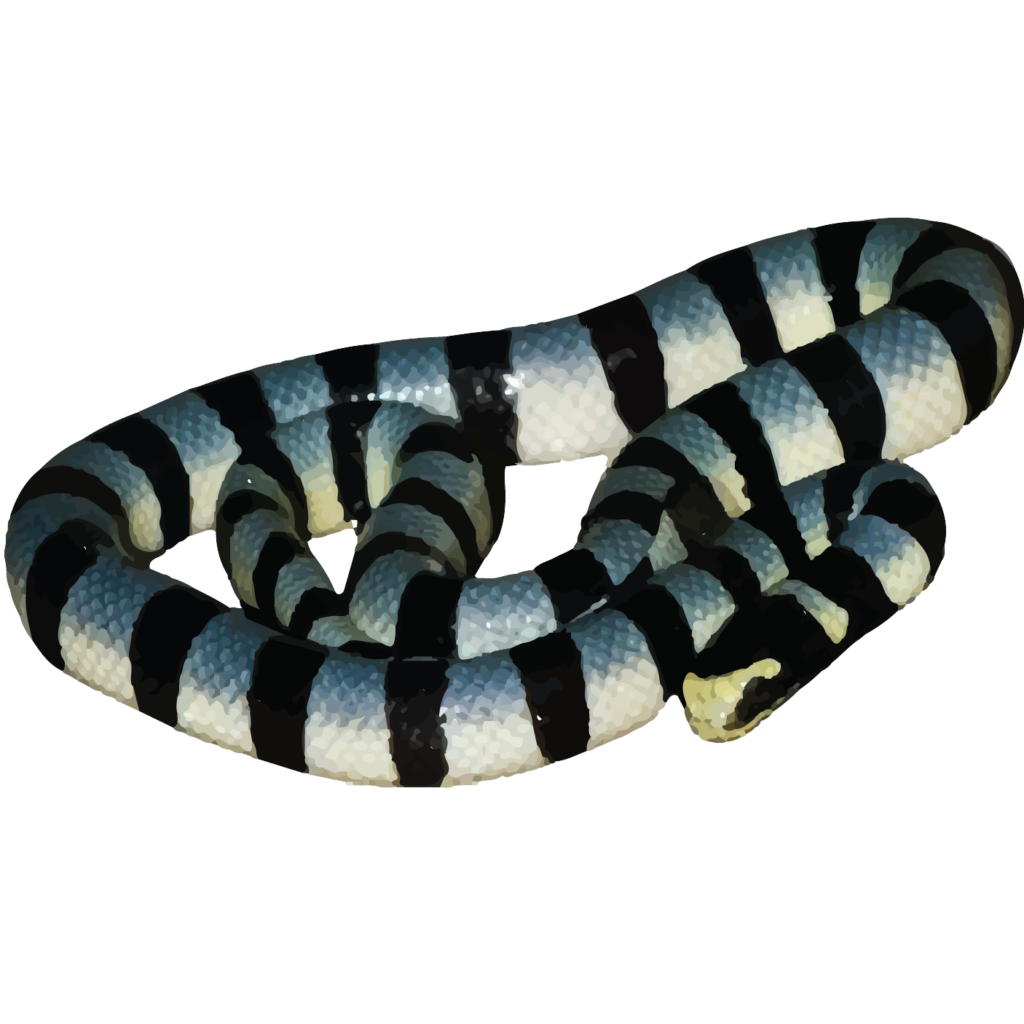Yellow-lipped Sea Krait (Laticauda colubrina)

- Habitat: Open ocean, shallow coastal waters, coral islands, coral reefs, and mangrove areas, vegetation, under beach rocks, or in small crevices and caves.
- Distribution: Andaman and Nicobar Islands.
- Diet: Eels and fishes.
- Size: 0.8 to 1.45 metres
The Yellow-lipped Sea Krait (Laticauda colubrina), also known as the Banded Sea Krait, is a venomous sea snake found in the Indo-Pacific region. It is known for its distinctive appearance and amphibious lifestyle, spending time both on land and in water. Here are some key details about this species:
Physical Description:
- Appearance: The Yellow-lipped Sea Krait has a distinctive black and white banded pattern along its body, with a yellow or cream-colored upper lip, giving it its common name.
- Size: Adults typically measure between 1 to 1.5 meters (3.3 to 5 feet) in length, with females generally being larger than males.
- Tail: The tail is flattened laterally, resembling a paddle, which aids in swimming.
Habitat:
- Geographical Range: The Yellow-lipped Sea Krait is found throughout the Indo-Pacific region, including the coastal waters of Southeast Asia, Northern Australia, and islands in the Indian and Pacific Oceans.
- Preferred Habitat: It inhabits coral reefs, mangroves, and rocky shores. While it spends a significant amount of time in water, it comes ashore to rest, digest food, mate, and lay eggs.
Conservation:
- Status: The Yellow-lipped Sea Krait is not currently considered endangered and is classified as Least Concern by the IUCN. However, it faces threats from habitat destruction, pollution, and accidental capture in fishing nets.
- Protection: Conservation efforts include habitat preservation and reducing bycatch in fisheries.
Importance:
- Ecological Role: The Yellow-lipped Sea Krait plays an important role in maintaining the balance of coral reef ecosystems by controlling populations of eels and other small fish.
- Human Interaction: While its venom is highly toxic, bites are rare due to the snake’s shy nature. Most incidents occur when the snake is handled or stepped on.
